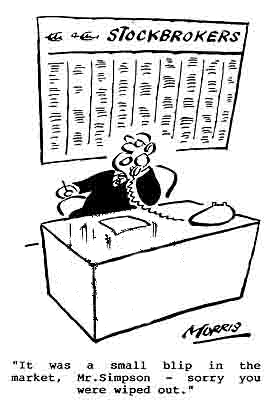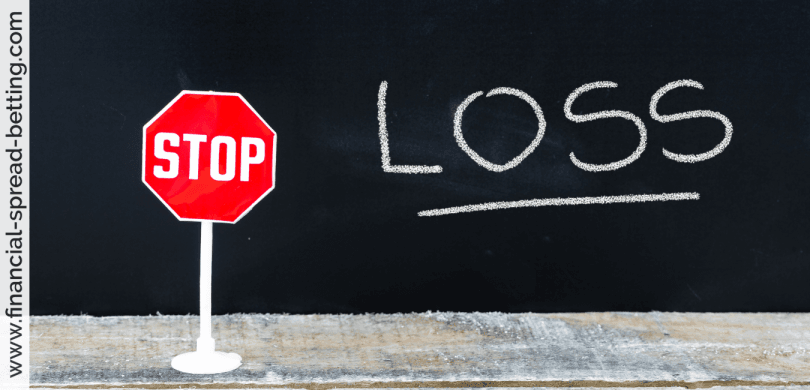Surviving the rigours of the financial markets demands not just a good risk management technique but also the strength of mind to stick to it. Staying disciplined may sound easy enough but the emotions are never far from the surface when serious money is at stake. Robert Newgrosh, who runs the New Skills training courses, says people need to appreciate that psychology is the most important aspect of trading: ‘Every individual is vulnerable and has to work continuously to avoid the market mind traps. Central to this is the discipline to do what you know you should be doing and the objectivity to see things as they are and not how you want them to be.’
Tom Hougaard, chief market strategist at City Index, agrees the human element of trading is the most difficult to master. ‘At the end of the day every trader has a choice and inevitably the temptation is to follow the path of least resistance, which may mean not sticking to the plan.’

A good risk-management strategy should preserve capital from the inevitable losses so that it is available to exploit those winning trades. This means every market participant needs a clear exit strategy that governs both profitable and loss-making positions.
Will Armitage, market commentator at IG, has witnessed a whole range of different trading approaches. ‘In terms of profit taking, some people take round-number points gains and others base it on the charts, in fact it is a common trait to take profits too early, which is why one of the most important qualities of a good trader is restraint,’ he says.
David Buik, market analyst, is however quick to point out that no one has ever gone broke on a profit. ‘Whenever investors manage to take a profit they have done well. The lack of any clear pattern in the market over the past few months has meant people are adopting an increasingly short-term view and becoming more realistic over what they can hope to make.’
Making profits is one thing but the mind games really come into play when positions start to slip into the red. Buik advises traders in this situation to stay focused on their risk reward ratio. ‘People should ask themselves how much they can afford to lose and then always invest with this in mind. This means setting a maximum loss and being disciplined enough to stick to it,’ he explains.
Stop the Losses – Stop Loss Orders
One of the most useful aids to risk management is the stop-loss order, which is now commonly available from many online brokers. Set below the current price, stop loss sell orders serve to automatically trigger a sell instruction should the price fall to that level, thereby limiting potential losses
Hougaard says traders should always use a stop-loss. ‘Personally I prefer stops defined by the chart pattern as opposed to monetary stops as traders can tailor their positions to stay consistent with their maximum tolerable losses, for example by reducing the position size if the stop is further out.’ A good stop protects the position and allows profits to accumulate, while a bad one will prematurely stop out positions if too tight or expose the trade to excessive risk if too wide.
Armitage says that despite the stops it can still be very difficult to take the loss. ‘Traders should use stops but they need to do so in a disciplined way. Some people really struggle to accept losses and will actually move the stops down out of the way to avoid crystallising the hit!’
This can only exacerbate the problem. As Newgrosh says, most losses start small and it is the trader who lets them get bigger.
A normal stop-loss order is only triggered if the market price matches the specified level of the stop, with the trade then automatically going through at the best price prevailing in the market. In effect the stop-loss sell turns into a market order as soon as the exchange price hits that figure. The problem is that in a volatile market this could be well below the level of the stop.
Barclays Stockbrokers, Comdirect, TD Waterhouse and others offer a variation on the normal stop loss – the ‘stop-sell order with limit’. This reduces the risk of a price gaping past the stop and failing to execute by establishing a larger selling zone between the stop and the lower limit – the minimum price the trader would be willing to accept.
Some providers go a step further and offer guaranteed stops. At City Index for example, the limited-risk spread bets and CFDs will be executed at the specified stop even if the market gaps through this level. These orders have to be placed when the trade is first opened and cost a little extra on the spread
Hougaard says guaranteed stops are only available for the constituents of the FTSE 100 and the Dow Jones. ‘Traders have to weigh up the extra cost against the risk of one of these blue chips gaping 5%-plus as we have seen with Royal Sun Alliance, Abbey, Marconi and Merk.’
Make your profits, cut your losses. An old saying could help traders and investors to prosper: he who fights and runs away lives to fight another day. Nick Sudbury explains
Programmed Trading
There is a general move among online brokers, CFD providers and spread betting companies to offer more sophisticated order types. One example is the OCO or one cancels the other, which can be used to combine a limit and a stop order such that when one order is executed the other is automatically cancelled.
The ‘if done OCO’ order from E*TRADE is a variation on this that kicks into play if the trade is made, setting both a stop and a limit to establish a price target with a maximum allowable loss. These combination orders introduce to the retail marketplace the same sort of automated approach as used by the institutions in their programme trading.
Hans Georgeson, director of Barclays Stockbrokers, says advanced orders force traders to think through their strategy and consider where they would take their profits and losses. The company has recently launched the new innovation of trailing stops. ‘A normal stop-sell order is static but a trailing stop is dynamic over time and tracks any increase in the share price. For example, with Barclays shares trading at 560p, a trailing stop to sell could specify selling 1,000 shares when the price drops 20p. Should the price increase to 600p the trailing stop would automatically follow it up to 580p,’ explains Georgeson.
Trailing stops are only currently available to Barclays’ Signature Services clients – those who trade 50 times a year or more or hold a substantial portfolio with the company – but there are plans to roll it out to more clients in time. Even with this restricted access there has been a dramatic takeup in the few weeks since launch.
Trailing stops will not execute in a fast market that gaps over the specified price level but Georgeson says clients can impose a limit as an extra precaution. ‘Clients can specify a trailing stop to sell at 20p with a limit of 10p. This means if the share price falls 20p to trigger the stop-sell there is then a further 10p bracket in which we can try and place the sell trade.
Barclays’ trailing stop software includes code that compares the current price to the bid/offer spread to check whether a rogue trade is responsible for triggering the stop. Where this is the case the position would not be stopped out prematurely. This criticism is sometimes levelled at the intra-day stops from the spread betting companies, as these are vulnerable to momentary price movements caused by unusual trades distorting the order book.
Traders without access to these automatic trailing stops can of course manually implement a more limited version of this strategy by periodically moving their stop loss level
‘It is a common trait to take profits too early, which is why one of the most important qualities of a good trader is restraint’
No Margin for Error
Risk management is important whatever the instrument being traded but especially for anyone using margined products such as CFDs, futures or spread bets. Trading derivatives on margin opens up the possibility of greater potential profits but at the risk of larger losses.
The worst-case scenario when trading stocks and shares is that the investment will lose all of its value. This is bad enough but with geared instruments potential losses are not restricted to the cash committed to the margin account, instead additional capital calls can be made if large losses are incurred.
This has prompted several spread betting companies to adopt a radical risk management approach. Some providers for example insist clients use stops on all their positions and most do not offer credit accounts these days. This means clients cannot lose any more money than they have deposited with the company.
ETX Capital.com also insists on compulsory stop loss spread betting orders. Regina Malzberg, head of marketing and PR, says that to place a trade without a stop is extremely risky. ‘We don’t charge for stops and clients can move them further away from the default levels if they want, but we insist there are sufficient funds in the account to cover the worst-case scenario of the stop being triggered.
These stops are not guaranteed but to guard against the risk of the price jumping the stop level ETX Capital adds an additional margin requirement. Should a position move into profit then clients can move the stop up to lock in the gain.

